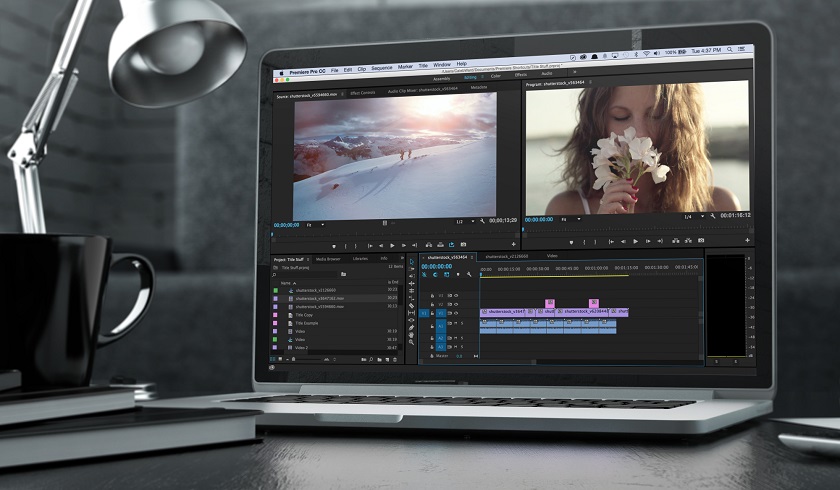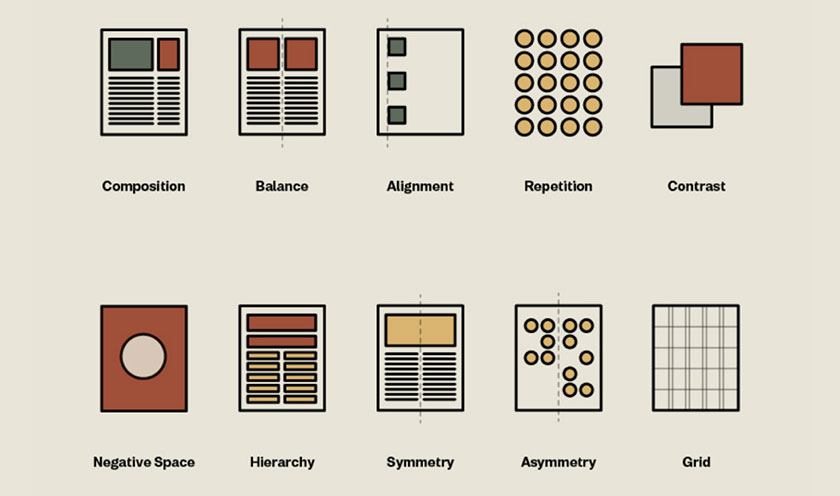Best Selling Products
How much does it cost to re-edit? - Part 2 project payment
Nội dung

In "How much to charge for professional photo editing? - Hourly Paying Part 1," we looked at hourly billing, the positives and negatives it offers as a pricing model. and a rough idea of a typical hourly retouch fee.  In Part Two, we'll discuss flat rate quotes and payments, simple pre-agreed project fees, and the ideal time to test your rate hikes.
In Part Two, we'll discuss flat rate quotes and payments, simple pre-agreed project fees, and the ideal time to test your rate hikes.  Rear view of a graphic designer using a pen tablet in front of a computer in an office. Blank computer screen; Shutterstock ID 423683608 Daily journaling for invoicing is tedious, and with a pre-agreed project fee, you'll never have to worry about splitting your client's work time. With project payment you can relax by taking a break from watching entertainment on Youtube as it is a perfectly valid use of your time as long as you hit your deadline with a product. quality products. With hourly billing, if you overestimate the time it takes to complete, you may end up with a bill that's much smaller than expected. This makes for a very happy customer, but it can sometimes feel like the value of the work you've provided and your contribution isn't compensating, especially for commercial campaigns. An agreed project fee prevents this, the client knows what they are paying and you know what you are getting paid.
Rear view of a graphic designer using a pen tablet in front of a computer in an office. Blank computer screen; Shutterstock ID 423683608 Daily journaling for invoicing is tedious, and with a pre-agreed project fee, you'll never have to worry about splitting your client's work time. With project payment you can relax by taking a break from watching entertainment on Youtube as it is a perfectly valid use of your time as long as you hit your deadline with a product. quality products. With hourly billing, if you overestimate the time it takes to complete, you may end up with a bill that's much smaller than expected. This makes for a very happy customer, but it can sometimes feel like the value of the work you've provided and your contribution isn't compensating, especially for commercial campaigns. An agreed project fee prevents this, the client knows what they are paying and you know what you are getting paid.  The hourly and project-based invoicing debates work best with freelancing, and the only right answer is the one that works for you. Sure, it's important to decide on an hourly or daily rate, but consider offering your client a project fee based on that hourly rate. It's not uncommon to give a quote by explaining that 'based on my $X per hour, we are looking at a fifteen-hour project totaling $Y'. This gives you the opportunity to suggest that any revisions and additions to the project outside the scope of the original brief may be billed at $X per hour. Always make sure to update your quote before you start using that meter and explain why.
The hourly and project-based invoicing debates work best with freelancing, and the only right answer is the one that works for you. Sure, it's important to decide on an hourly or daily rate, but consider offering your client a project fee based on that hourly rate. It's not uncommon to give a quote by explaining that 'based on my $X per hour, we are looking at a fifteen-hour project totaling $Y'. This gives you the opportunity to suggest that any revisions and additions to the project outside the scope of the original brief may be billed at $X per hour. Always make sure to update your quote before you start using that meter and explain why.
 In Part Two, we'll discuss flat rate quotes and payments, simple pre-agreed project fees, and the ideal time to test your rate hikes.
In Part Two, we'll discuss flat rate quotes and payments, simple pre-agreed project fees, and the ideal time to test your rate hikes. Professional editing costs paid by project
On the positive side
A client who wants a solid number to include in a budget or flat project fee proposal allows for this. It's a convenience for your customers that gives them peace of mind going forward, and as a service provider, you can provide that. Another plus worth considering with project billing is that your fees won't decrease as your skills and work rate increase, in fact, in real terms, they do. Under the hourly payment method, a project that used to take you two hours and now takes only an hour will cost you only 50% of the old fee, possibly for a superior job. When you agree to a flat project fee, working faster and more efficiently will benefit you as your actual hourly rate increases, in the case of the example given, it actually double. Rear view of a graphic designer using a pen tablet in front of a computer in an office. Blank computer screen; Shutterstock ID 423683608
Rear view of a graphic designer using a pen tablet in front of a computer in an office. Blank computer screen; Shutterstock ID 423683608About the negativity
When working for clients with whom you have a solid working relationship and understand their needs, you can often be more confident in your assessment of your time spending, but with a client new, you can't be sure that the project won't turn into a long experimental exercise, and it boils down to “Can we change this?” “This is a new reference idea, can you do it this way instead?” and 'closer to there but try something completely different' can turn into an unpleasant experience. Also, when you prepare a fixed quote for a client, you have assumed a lot of costs. You may have looked at the quirky elements of the images (smooth skin, wrinkled clothes, neat mask…), considered all the markups, notes, and client requests. and pretty confident that you can set a tentative price on them to give you fair compensation for your time in general, a dozen shots. Even with experience, these estimates can be wrong, and as a result you can spend a day of your time exceeding what you originally expected, seeing the value of your time and input. you decrease.The best of two payment styles
 The hourly and project-based invoicing debates work best with freelancing, and the only right answer is the one that works for you. Sure, it's important to decide on an hourly or daily rate, but consider offering your client a project fee based on that hourly rate. It's not uncommon to give a quote by explaining that 'based on my $X per hour, we are looking at a fifteen-hour project totaling $Y'. This gives you the opportunity to suggest that any revisions and additions to the project outside the scope of the original brief may be billed at $X per hour. Always make sure to update your quote before you start using that meter and explain why.
The hourly and project-based invoicing debates work best with freelancing, and the only right answer is the one that works for you. Sure, it's important to decide on an hourly or daily rate, but consider offering your client a project fee based on that hourly rate. It's not uncommon to give a quote by explaining that 'based on my $X per hour, we are looking at a fifteen-hour project totaling $Y'. This gives you the opportunity to suggest that any revisions and additions to the project outside the scope of the original brief may be billed at $X per hour. Always make sure to update your quote before you start using that meter and explain why. When should you raise prices?
The best way to know when it's time to pay is when you're overworked. If you've been working for a few months and you've been signed up in the coming weeks, that's a good sign that your needs are in a good enough position to command a higher fee from inquiries. new. I remember for the first time in my career I was so overworked that I spent $1700 on a project that at the time, I normally billed for about a fifth of that. My thinking is that if I don't get the job I'll still be busy, if I get the job then enough money to buy the coffee I need. And I got the job. In situations where you feel overworked, such a speculative quote can be a minimally risky opportunity to gauge your market. Increasing your rates at a time when you have a well-balanced workload can be frustrating, so do it when you can afford to take the damage if it doesn't work out. Some customers you have a good working relationship with, you may choose to keep rates low, others you may want to let you know in advance that your fees will increase. Please notify them of when this goes into effect. Be aware that you'll leave some customers behind as you increase fees, but if you replace that lost income with more jobs at a higher rate, you're on the right track.Don't charge lower!
As discussed in part 1 on hourly billing editing costs, as a freelancer work/life balance is very important and even if it is possible to charge a few dollars per small project, the rate The turnover ratio you have to overcome on your own to maintain your income can be exhausting. Working on thousands of small deals is a valid business model if you want to compete in that environment, but consider marketing your time, talking to customers, even the phone you're running. using and in many economies to charge the lowest is an unsustainable model unless you are pulling 60 hours per week. In the end, making the right payment not only helps you, but also the market. Retouching is a specialized skill, a craft and a craft that takes years to develop into mastery, and that shouldn't be depreciated. If your goal is a freelancer with a steady personal income, don't be tempted to fall into the trap of people around you charging their two-hour coffee. A good customer will recognize your value, may even expect and be prepared to pay many times your quote. You just have to be brave enough to say: "I know the value of my skills and experience, if you do too, let's work together." Sadesign Co., Ltd. provides the world's No. 1 warehouse of cheap copyrighted software with quality: Panel Retouch, Adobe Photoshop Full App, Premiere, Illustrator, CorelDraw, Chat GPT, Capcut Pro, Canva Pro, Windows Copyright Key, Office 365 , Spotify, Duolingo, Udemy, Zoom Pro...
Contact information
SADESIGN software Company Limited
Sadesign Co., Ltd. provides the world's No. 1 warehouse of cheap copyrighted software with quality: Panel Retouch, Adobe Photoshop Full App, Premiere, Illustrator, CorelDraw, Chat GPT, Capcut Pro, Canva Pro, Windows Copyright Key, Office 365 , Spotify, Duolingo, Udemy, Zoom Pro...
Contact information
SADESIGN software Company Limited












































